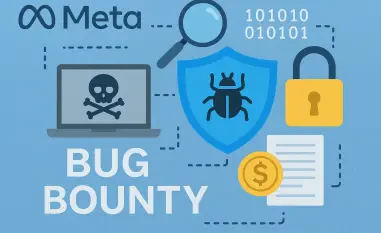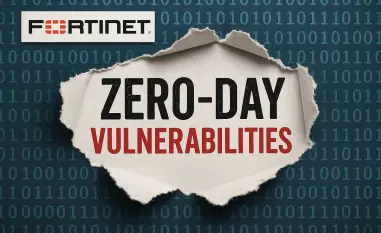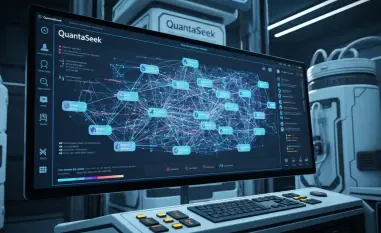Imagine a world where AI systems autonomously manage critical operations, from financial transactions to healthcare diagnostics, only to be derailed by a single malicious input that cascades into catastrophic failure. Agentic AI, powered by large language models (LLMs), is revolutionizing industries with its ability to execute tasks independently. Yet, this innovation comes with a dark side: unprecedented cybersecurity risks that could undermine trust in these systems. This roundup article gathers insights, opinions, and strategies from various industry experts and thought leaders to uncover the most pressing cyber threats facing agentic AI. The purpose is to provide a comprehensive overview of these challenges and actionable guidance for organizations navigating this evolving landscape.
Unpacking the Cybersecurity Challenges of Agentic AI
Agentic AI systems, which leverage advanced LLMs to perform automated tasks, are transforming sectors by enhancing efficiency and decision-making. These systems operate with a level of autonomy that sets them apart from traditional software, enabling dynamic interactions across tools and environments. However, this very autonomy exposes them to unique vulnerabilities that conventional cybersecurity measures often fail to address.
The urgency to secure these systems has never been more critical as their integration into business operations deepens. Experts across the field agree that the stakes are high, with potential breaches risking data leaks, operational disruptions, and eroded public trust. Unlike older software threats, the risks here stem from AI’s inherent unpredictability and adaptability, creating a new frontier for attackers to exploit.
This discussion sets the stage for a detailed examination of specific threats, including context corruption, dynamic tool sourcing vulnerabilities, and authentication challenges. By compiling perspectives from multiple sources, this roundup aims to highlight not just the problems but also the innovative strategies being proposed to mitigate them, offering a balanced view of the current state of AI security.
Diving Deep into the Core Risks Facing Agentic AI
Context Corruption: The Silent Saboteur of AI Integrity
Context corruption emerges as a top concern among cybersecurity professionals focusing on agentic AI. This threat occurs when malicious inputs distort an AI agent’s understanding of its environment or instructions, leading to erroneous outputs or actions. Comparable to SQL injection in traditional systems, this manipulation can have devastating consequences, especially in high-stakes applications.
Real-world implications of context corruption are stark, with documented cases revealing how simple inputs, such as crafted emails, can trigger sensitive data leaks in AI tools integrated into productivity suites. Specialists note that the challenge lies in the AI’s inability to reliably distinguish between legitimate and harmful inputs, a flaw that attackers can exploit with alarming ease.
Mitigating this risk is particularly difficult in multi-agent setups where misinformation from one agent can spread to others, creating a ripple effect of errors. Many experts stress that detecting such corruption often requires advanced monitoring tools beyond current capabilities, pushing for the development of more robust detection mechanisms to safeguard AI integrity.
Dynamic Tool Sourcing: Navigating the Perils of Flexibility
The ability of agentic AI to autonomously select and integrate tools is a double-edged sword, offering flexibility while introducing significant supply chain vulnerabilities. Industry voices highlight that this dynamic sourcing can inadvertently open backdoors for attackers if a trusted tool or service becomes compromised or embeds malicious directives.
Concerns are raised about the real-time nature of these interactions, which complicates traditional threat modeling. Unlike static software environments, the fluid integration of tools means that risks evolve rapidly, often outpacing existing security protocols. Some professionals warn of scenarios where seemingly benign updates to tools could introduce harmful instructions undetected.
A variety of opinions exist on how to address this issue, with some advocating for stricter validation processes before tool integration, while others suggest limiting AI’s autonomy in tool selection. Despite differing approaches, there is consensus on the need for enhanced visibility into these interactions to prevent exploitation of this critical feature of agentic systems.
Authentication Woes: Untangling the Web of Permissions
Managing identities and permissions in dynamic, multi-agent AI environments poses a formidable challenge, often described by experts as an expanding maze of risks. The complexity arises from the need to track and validate permissions across numerous agents, each potentially interacting with different systems and data sets.
Forensic difficulties in monitoring permission changes are a recurring theme in discussions, with many pointing out that unauthorized access or data breaches can occur if shifts in authorization go unnoticed. Examples from simulated environments show how quickly a single lapse can compromise an entire network, amplifying the need for tighter controls.
Conventional authentication models are widely criticized for falling short in these scenarios, prompting calls for AI-specific frameworks. Some industry leaders propose real-time monitoring solutions to map permission states continuously, while others emphasize the importance of redesigning identity verification to match the unique demands of agentic AI interactions.
Interconnected Vulnerabilities: The Domino Effect in Multi-Agent Systems
The interplay between context corruption, dynamic tool sourcing, and authentication flaws creates a compounded risk profile in multi-agent AI networks. Experts frequently note that a breach in one area, such as a corrupted input, can trigger failures in tool selection or permission management, leading to widespread disruption.
Perspectives vary on the best approach to tackle these overlapping threats, with some advocating for integrated security frameworks that address all risks holistically. Speculative scenarios discussed in industry forums suggest that as AI adoption scales, attack vectors could become even more sophisticated, necessitating forward-thinking defenses.
A common critique is the inadequacy of isolated fixes, with many arguing that only comprehensive visibility and control mechanisms can effectively manage these interconnected vulnerabilities. This viewpoint underscores the importance of adopting a systemic approach rather than addressing threats in silos, a strategy gaining traction among security professionals.
Key Insights and Practical Defenses for Agentic AI Security
Synthesizing the views of various industry leaders, the critical threats to agentic AI—context corruption, tool sourcing risks, and authentication challenges—stand out as major hurdles to safe deployment. Their impact on AI-driven operations is profound, potentially derailing efficiency gains if not addressed with urgency and precision.
Practical defenses are a focal point of expert recommendations, including implementing robust controls over input contexts to prevent manipulation, enforcing validated tool selection processes to minimize supply chain risks, and developing authentication protocols tailored for AI’s dynamic nature. These strategies aim to fortify systems against the most pressing vulnerabilities.
Organizations are encouraged to integrate specialized security solutions designed for AI environments and to stay abreast of emerging research. This proactive stance, supported by a broad consensus in the field, equips businesses with the tools to anticipate and counter threats, ensuring that agentic AI can deliver its promised benefits without compromising safety.
Looking Ahead: Securing the Future of Agentic AI
Reflecting on the discussions that unfolded, it becomes clear that agentic AI has positioned itself as both a groundbreaking innovation and a significant cybersecurity challenge. The insights gathered from diverse experts paint a picture of a technology landscape at a pivotal moment, where vulnerabilities demand immediate and inventive responses.
The path forward involves a commitment to balancing AI’s transformative capabilities with stringent safeguards. Thought leaders stress actionable steps like adopting AI-specific security tools and fostering collaboration across industries to share best practices, ensuring that defenses evolve alongside threats.
Consideration of long-term strategies also emerges as a key takeaway, with many advocating for ongoing investment in research to preempt future risks. By prioritizing these efforts, organizations can build a foundation to harness agentic AI’s potential while mitigating the dangers that loom, setting a precedent for responsible innovation in a complex digital era.













